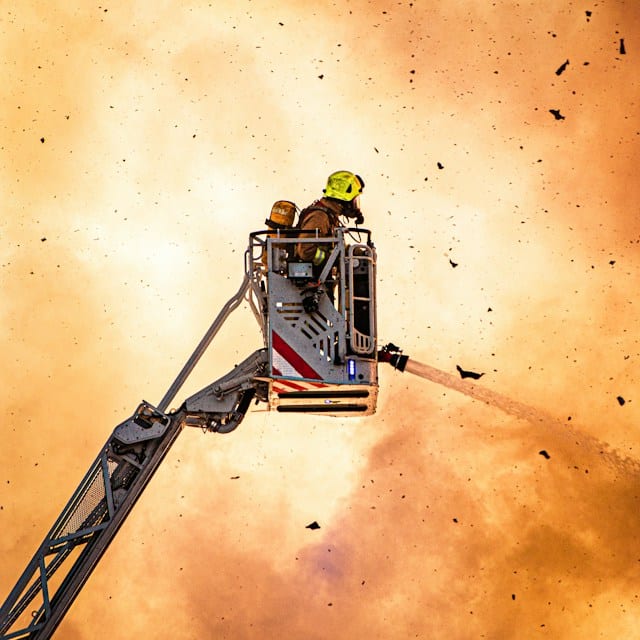If you ever thought that firefighting was all about courage, quick reactions, and water hoses, you’d be both right and wrong. While these elements still form the backbone of firefighting, technology is increasingly playing a significant role in combating flames. Whether it’s tackling city fires or beating back the rampaging wildfires, tech advancements are helping firefighters do more than ever before.
From drones that can penetrate smoke-filled environments to data systems for strategic response planning, let’s explore the fascinating world of fire technology and how it’s ushering in a new era for firefighting.
Dans le meme genre : How are nanotechnologies contributing to more effective medical treatments?
Technological Advancements in Firefighting Training
Before our brave men and women in red can face real fires, they must first go through intense training. Modern technology is transforming how firefighter training is conducted, making it safer and more effective.
Virtual reality (VR) is a game-changer in this regard. Trainees can now don VR headsets to experience realistic fire scenarios without the risk of actual injuries. The VR environment replicates the heat, smoke, and disorientation of a real fire, allowing trainees to practice their response tactics.
En parallèle : What is the future of wearable tech in personal health monitoring?
Another innovation is digital simulation software. This system replicates various fire scenarios on a computer, enabling firefighters to strategize and hone their decision-making skills. It also saves training time because it can be used anywhere, eliminating the need for physical fire simulation facilities.
Using Drones and Robotics for Firefighting
Drones are not just for stunning aerial photography. They are now being used to help firefighters tackle blazes more effectively.
With thermal imaging cameras and sensors, drones can penetrate dense smoke and locate hotspots in a fire. This capability is especially useful in fighting wildfires, where the scale of the fire often makes it challenging to determine the fire’s progression.
Robots, too, are beginning to find a place in firefighting. Remote-controlled robots can go into danger zones where it’s too risky for humans. They can extinguish fires, perform search and rescue operations, and even demolish structures to prevent fire spread. This technology dramatically enhances firefighter safety and increases the chances of successful firefighting missions.
How Data Systems Aid in Firefighting
Data is a vital weapon in the firefighting arsenal. Advanced data systems can gather real-time information about fires and use this data to predict fire behavior, guide resource allocation, and develop strategic response plans.
For instance, geographic information system (GIS) technology can provide detailed maps of fire-affected areas, including information about vegetation, weather, and terrain. This data can be crucial in predicting how a wildfire might spread and where firefighting resources should be deployed.
Likewise, data from weather systems can predict wind direction and speed, humidity levels, and other factors that influence fire behavior. Such information helps firefighters stay one step ahead of the fire and take proactive measures to contain it.
How Fire Protection Systems Are Evolving
Fire protection systems have come a long way from the humble smoke detector. The technology used in these systems is becoming more sophisticated, enabling faster and more efficient responses to fires.
One such innovation is the smart smoke detector. Unlike traditional smoke detectors that merely sound an alarm, smart detectors can send alerts to your smartphone, even if you’re not at home. Some models can even pinpoint the exact location of the fire within a building, saving precious time for the firefighters.
Another remarkable development is the water mist system. Instead of dousing fires with large amounts of water, these systems use a fine mist to cool the flames and displace oxygen, thereby suppressing the fire. This technology is especially beneficial in environments where water damage could be detrimental, such as data centers or museums.
Wildfire Technology: Predicting and Controlling Wildfires
Wildfires present a unique challenge to firefighters, mainly due to their sheer scale and unpredictable nature. However, technology is making significant strides in predicting and controlling these fires.
Infrared imaging technology can detect wildfires even before they produce smoke, enabling early response. Similarly, satellite imagery can provide real-time data on fire size, direction, and speed, aiding in strategic planning.
Furthermore, predictive modeling software can simulate wildfire behavior based on various factors such as weather, terrain, and vegetation. These predictions can guide firefighting efforts and help in creating effective firebreaks.
Also, automated weather stations placed in fire-prone areas can provide valuable data on temperature, humidity, and wind, which can influence wildfire behavior.
Indeed, while the brave firefighters remain the frontline defense against fires, technology is increasingly becoming their indispensable ally, enhancing their capabilities, and ensuring their safety.
The Role of Artificial Intelligence in Firefighting
Artificial intelligence (AI) is no longer a concept of the future. It is increasingly becoming integrated into every aspect of our lives, and firefighting is no exception. AI can revolutionize the way we tackle fires, making it more efficient, safer, and smarter.
AI-powered drones and robots are already becoming more commonplace in the fire service industry. They are capable of going into dangerous situations, reducing the risk to human firefighters. But AI has far more to offer. For example, machine learning algorithms can analyze massive amounts of data from different sources in real time. This could include data from weather systems, geographic information, and past fire incidents.
These algorithms can then make accurate predictions about where a fire might spread, how fast it will move, and what tactics will be most effective to extinguish it. Such predictive analytics can significantly improve the decision-making process during firefighting operations. It can help firefighters prioritize their efforts, deploy resources more effectively, and ultimately, save more lives and property.
Additionally, AI can play a crucial role in fire prevention. Through the analysis of historical fire data, AI can identify patterns and predict where future fires are most likely to occur. This information can guide fire departments in planning their fire prevention strategies, such as public education campaigns and fire hazard reduction initiatives.
In essence, AI provides a powerful tool for the fire service. By harnessing its capabilities, firefighters can enhance their ability to fight wildfires, improve fire safety, and strengthen fire protection measures.
Conclusion: The Future of Firefighting with Tech Innovations
As we’ve seen, technology fire innovations have significantly transformed firefighting techniques from training to actual fire suppression. Tools like virtual reality, drones, robots, advanced data systems, and artificial intelligence are providing firefighters with new ways to combat fires and protect communities.
Incorporating real-time data into decision-making processes has enabled firefighting teams to respond more strategically to a fire crisis. These advancements have not only improved the efficacy of firefighting missions but have also played a crucial role in enhancing fire safety and the overall accuracy of fire prevention strategies.
Moreover, technology is revolutionizing fire extinguisher mechanisms. The development of smart smoke detectors and water mist systems have provided more efficient and effective means of suppressing fires. They are redefining the concept of fire protection, making it smarter and more responsive.
Looking ahead, we can expect to see even more advancements. The integration of artificial intelligence with aerial firefighting techniques, for example, opens up exciting possibilities. AI-based predictive analytics could provide valuable insights into fire behavior, enabling more effective strategies to contain and suppress fires.
The firefighters’ bravery and quick reactions will always remain a pillar of firefighting. However, with the support of these tech innovations, firefighting can be safer, more efficient, and better prepared to face the challenges of the future. It is indeed an exciting era for the fire service industry, one that is increasingly driven by the power of technology.











